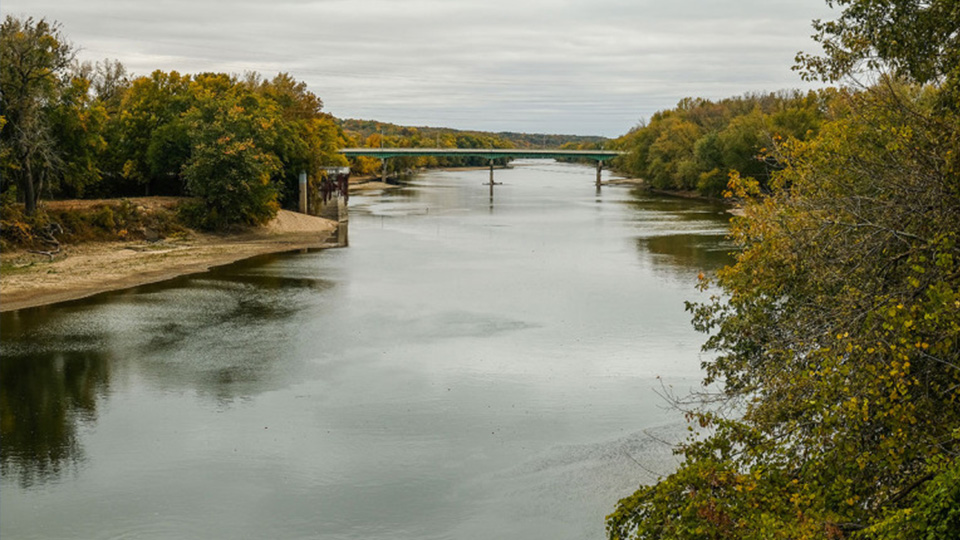Governor shifts oversight of LEAP water study away from IEDC
Subscriber Benefit
As a subscriber you can listen to articles at work, in the car, or while you work out. Subscribe Now
INDIANAPOLIS - Gov. Eric Holcomb has directed the Indiana Finance Authority to begin “exclusive oversight” of a water supply study currently underway along the Wabash River that is meant to determine whether water can be piped from Tippecanoe County to Boone County to supply the LEAP Innovation and Research District without harming resources available to other communities.
The Indiana Economic Development Corp., the state’s public-private job creation agency, had commissioned engineering firm Intera to study the feasibility of withdrawing as much as 100 million gallons of water per day from an aquifer connected to the Wabash River and transporting it to LEAP, a planned 9,000 acre or more advanced manufacturing district near Lebanon. The water would then be treated and piped into a tributary of the White River or the Eagle Creek Reservoir.
Holcomb is also instructing the IFA to accelerate the start of a planned comprehensive regional water study for north-central Indiana that will examine watersheds covering Tippecanoe County and at least 12 other counties. The study, which will be the fourth such regional water study the IFA has conducted since 2017, is expected to be completed in fall 2024.
In addition to overseeing state-related debt issuances, the IFA manages the Wastewater and Drinking Water State Revolving Fund Loan programs and the Indiana Brownfields Program, which assists in the redevelopment of former industrial or commercial sites. Its members include the state budget director, the state treasurer and three other members appointed by the governor.
The IFA will be tasked with adding new water monitoring devices in the area to support the regional study while providing the public assurance that water use and availability will continue to be tracked accurately and in real-time, Holcomb said.
“I am confident that these new efforts led by IFA will provide the necessary data to gain a greater understanding of the amount of excess water that is truly available to support all the surrounding region’s growth prior to any action being taken that could inadvertently jeopardize this needed resource,” Holcomb said in written remarks released late Monday. “No entity is better suited to lead this overall pursuit than the IFA, which will approach this study in the same methodical, collaborative and transparent manner the organization has conducted in the past.”
Holcomb’s actions come as the IEDC faces pushback in the greater Lafayette area, where residents have formed a grassroots organization called Stop the Water Steal. In addition, four municipalities along the Wabash River—Attica, Lafayette, West Lafayette and Shadeland—have passed resolutions stating their opposition to the project.
“It is good that some other agency is going to be examining the data and collecting it going forward,” said David Sanders, a West Lafayette City Council member and founder of Stop the Water Steal, in response to Holcomb’s decision. “The one thing that concerns me in the statement of the governor is a reference to ‘excess water.’ I’m not sure there is excess water anywhere. It’s a natural part of the environment. I don’t think excess water is appropriate given how low the Wabash River was this past summer.”
Sanders said the governor’s decision is the result of community activists putting pressure on legislators and the Governor’s Office to place greater oversight over the IEDC’s controversial proposal.
In a statement, Indiana Secretary of Commerce David Rosenberg said that the IFA has “the right experts” to continue the study and incorporate its findings into a comprehensive regional water study.
The controversial project has also prompted state lawmakers representing the Lafayette region to draft legislation that would create a permitting process and require a deeper public review of any effort in the state to pump more than 10 million gallons per day from a community’s aquifer.
The IEDC is also looking to other parts of the state for a steady water supply to support the LEAP District, but earlier this month, Indianapolis-based utility company Citizens Energy Group withdrew its petition to the Indiana Utility Regulatory Commission to supply up to 10 million gallons of water per day to the development.
IEDC spokeswoman Erin Sweitzer said the pullout won’t affect the development.
“Lebanon currently has the water supply to support the short-term and intermediate needs of LEAP,” Sweitzer said, including those of Eli Lilly and Co., which is building two manufacturing sites that will be served by the existing Lebanon Utilities system.
